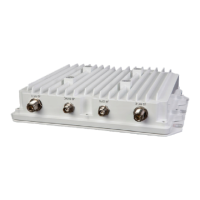3-8
RF-7800W
SYSTEM ADMINISTRATION AND CONFIGURATION
3.6 MANAGEMENT INTERFACES
The radio can be managed over a number of IP-based interfaces. This section describes how to configure these
different management interfaces. A standard web browser can be used to configure the radio over HTTP or HTTPS.
See Figure 3-4.
3.6.1 Graphical User Interface (GUI)
The subsections below describe GUI Management Interfaces configuration parameters.
3.6.1.1 HTTP
The HTTP service is turned on by default, but can be turned off in the interest of security. Microsoft Internet
Explorer 8 and Google Chrome are the only currently supported web browser, but others might also be functional.
3.6.1.2 HTTPS
The HTTPS service can be turned on and off. A host X.509 certificate and private key pair are pre-installed, but can
be overwritten with a user-generated certificate. A host X.509 certificate and private key pair must be loaded in order
to use HTTPS in FIPS Mode. Refer to Paragraph 3.10.2. FIPS Mode may be purchased separately. Refer to
Paragraph 5.6.
3.6.2 Command Line Interface (CLI)
The subsections below describe CLI Management Interfaces configuration parameters.
3.6.2.1 Telnet
The Telnet service is turned on by default, but can be turned off in the interest of security. The operating port can
also be changed from the default port number 23.
3.6.2.2 SSH
The SSH service can be turned on and off. A host key is pre-installed, but can be overwritten with a user-generated
host key. Refer to Paragraph 3.10.2.
3.6.3 Local Users (Role-Based Authentication)
The subsections below describe Users Management Interfaces configuration parameters. All parameters for Users
Management can only be accessed using GUI or CLI interfaces. See Figure 3-5.
3.6.3.1 Viewing User Accounts
The list of accounts that are able to access the GUI and CLI can be viewed from each interface. Each account has a
password, group, SNMP v3 Authentication and SNMP v3 Privacy method assigned. These accounts are designed

